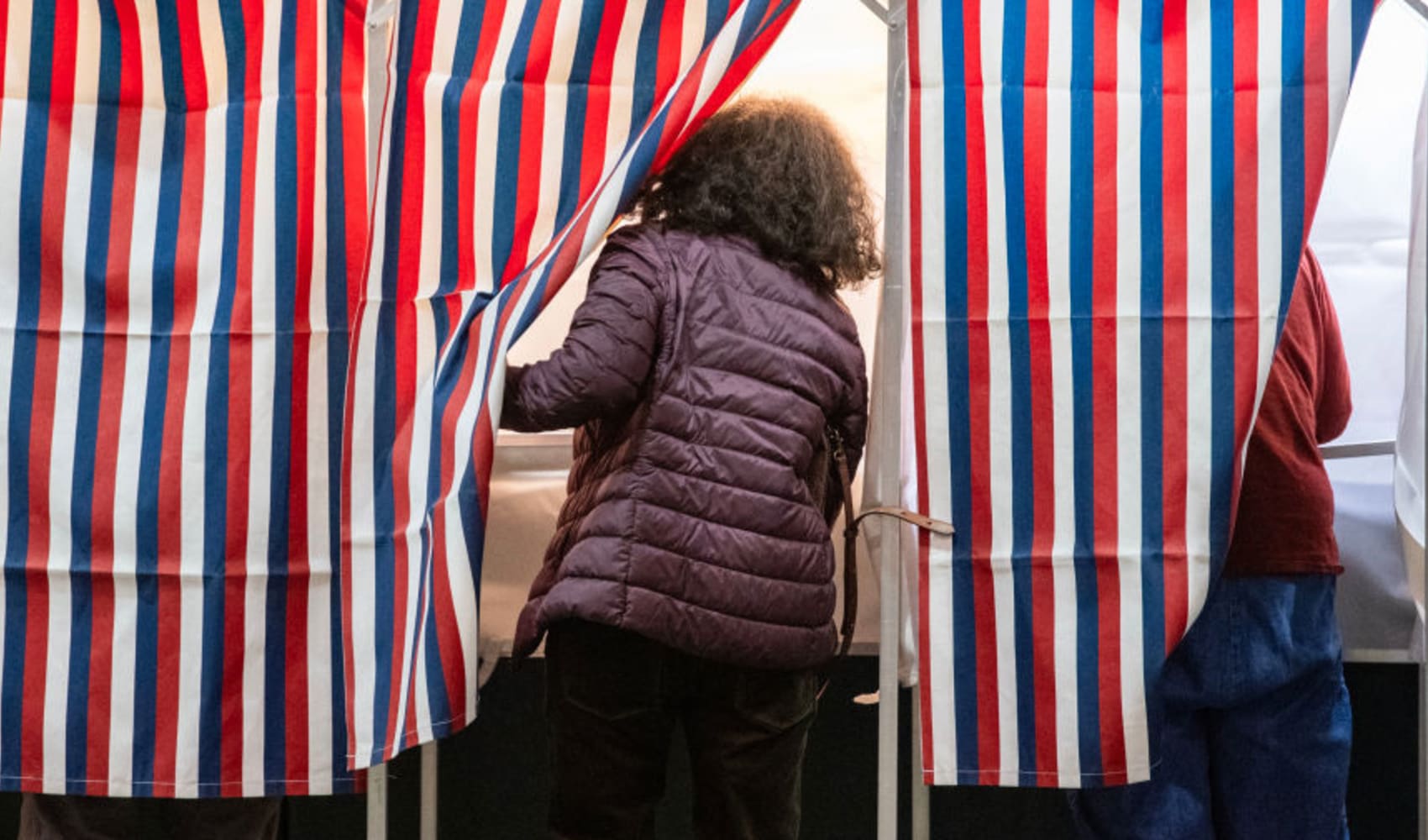Who will win the presidential election? Clues to look for as election results come in
Election results could take time to come in, but before the highly watched presidential race is called, there are some clues you can look to for how the contest might unfold. Polls close at 7 p.m. CT Tuesday for most locations in Illinois. Results will begin populating in the first half-hour and be updated live as counted votes roll in. Look to two East Coast battleground states, North Carolina and Georgia, where the results could come in relatively quickly. That doesn’t mean we’ll get the final results in those states quickly if the returns are close, but they are the first swing states that might offer a sense of what kind of night we’re in for. To go deeper, look to urban and suburban areas in the industrial North and Southeast, where Democrats have made gains since 2020. In North Carolina, Harris’ margins in Wake and Mecklenburg counties, home to the state capital of Raleigh and the state’s largest city, Charlotte, respectively, will reveal how much Trump will need to squeeze out of the less-populated rural areas he has dominated. In Pennsylvania, Harris needs heavy turnout in deep blue Philadelphia, but she’s also looking to boost the Democrats’ advantage in the arc of suburban counties to the north and west of the city. She has campaigned aggressively in Bucks, Chester, Delaware and Montgomery counties, where Biden improved on Clinton’s 2016 winning margins. The Philadelphia metro area, including the four collar counties, accounts for 43% of Pennsylvania’s vote. Elsewhere in the Blue Wall, Trump needs to blunt Democratic growth in Michigan’s key suburban counties outside of Detroit, especially Oakland County. He faces the same challenge in Wisconsin’s Waukesha County outside of Milwaukee. How can you track live election results? As votes are counted, updated results will appear on NBC Chicago’s live election results page. To track live Illinois election results Tuesday from around the state, bookmark this page. CLICK HERE FOR LIVE ELECTION RESULTS Voters looking for real-time election updates can also download the NBC Chicago app for push notifications as major races are called and big moments happen. When will we know who the next president is? Even though results will begin flowing in shortly after polls close on Election Day, that doesn’t mean the presidential race will be called Tuesday. Experts have warned that it’s likely we may not know if former President Donald Trump or Vice President Kamala Harris will win the race for some time. That’s because of laws in key swing states like Wisconsin and Pennsylvania, where clerks are unable to process mail-in ballots prior to Election Day. In 2020, those states were decided by approximately 20,000 and 80,000 votes, respectively. The answer hinges largely on one detail. “The final results are going to be months, because they have to be audited and they have to be canvassed and they have to be signed off on. But when will the American public know who they can confidently think is going to be our next president? That all depends on the margin, right?” Noah Praetz, president of The Elections Group and previous director of elections for Cook County, told NBC Chicago. “But I’ll tell you this, my sense is that most of the swing states are going to be able to have counted preliminarily at least all of their ballots, certainly by midday Wednesday. Arizona is a bit of a outlier, but they rely a lot more on mail balloting and those things just take a little bit longer than doing volume. So I think Wednesday would be a good time to have a sense of things.” Experts say the gap between the candidates will play a major factor in when results are called and what happens in the days after the election. This time, both campaigns believe the race is extremely close across the seven swing states that are expected to decide the election, barring a major surprise: Arizona, Georgia, Michigan, Nevada, North Carolina, Pennsylvania and Wisconsin. Delays aren’t unheard of in a presidential race, however, according to Dr. Kevin Boyle, chair of the history department for Northwestern University. “There are a lot of stories of presidential candidates just going to bed not knowing whether they had won the presidency or not,” Boyle said. In 2020, it took four days before President Joe Biden was officially called the winner. In 2000, results hinged on just 537 votes in Florida, with networks calling the state for Al Gore, then George Bush before ruling the race “too close to call.” “I do want people to not freak out about the election because actually we’ve gotten better at running these elections than we did in 2000,” said Professor Michael Kang of the Northwestern University School of Law. “There’s no comparison to how efficiently elections are run today and how professionally they’re run today as compared to 25 years ago.” Still, the 2016 election was decided just hours after most polls closed.

Election results could take time to come in, but before the highly watched presidential race is called, there are some clues you can look to for how the contest might unfold.
Polls close at 7 p.m. CT Tuesday for most locations in Illinois. Results will begin populating in the first half-hour and be updated live as counted votes roll in.
Look to two East Coast battleground states, North Carolina and Georgia, where the results could come in relatively quickly. That doesn’t mean we’ll get the final results in those states quickly if the returns are close, but they are the first swing states that might offer a sense of what kind of night we’re in for.
To go deeper, look to urban and suburban areas in the industrial North and Southeast, where Democrats have made gains since 2020.
In North Carolina, Harris’ margins in Wake and Mecklenburg counties, home to the state capital of Raleigh and the state’s largest city, Charlotte, respectively, will reveal how much Trump will need to squeeze out of the less-populated rural areas he has dominated.
In Pennsylvania, Harris needs heavy turnout in deep blue Philadelphia, but she’s also looking to boost the Democrats’ advantage in the arc of suburban counties to the north and west of the city. She has campaigned aggressively in Bucks, Chester, Delaware and Montgomery counties, where Biden improved on Clinton’s 2016 winning margins. The Philadelphia metro area, including the four collar counties, accounts for 43% of Pennsylvania’s vote.
Elsewhere in the Blue Wall, Trump needs to blunt Democratic growth in Michigan’s key suburban counties outside of Detroit, especially Oakland County. He faces the same challenge in Wisconsin’s Waukesha County outside of Milwaukee.
How can you track live election results?
As votes are counted, updated results will appear on NBC Chicago’s live election results page.
To track live Illinois election results Tuesday from around the state, bookmark this page.
CLICK HERE FOR LIVE ELECTION RESULTS
Voters looking for real-time election updates can also download the NBC Chicago app for push notifications as major races are called and big moments happen.
When will we know who the next president is?
Even though results will begin flowing in shortly after polls close on Election Day, that doesn’t mean the presidential race will be called Tuesday. Experts have warned that it’s likely we may not know if former President Donald Trump or Vice President Kamala Harris will win the race for some time.
That’s because of laws in key swing states like Wisconsin and Pennsylvania, where clerks are unable to process mail-in ballots prior to Election Day. In 2020, those states were decided by approximately 20,000 and 80,000 votes, respectively.
The answer hinges largely on one detail.
“The final results are going to be months, because they have to be audited and they have to be canvassed and they have to be signed off on. But when will the American public know who they can confidently think is going to be our next president? That all depends on the margin, right?” Noah Praetz, president of The Elections Group and previous director of elections for Cook County, told NBC Chicago. “But I’ll tell you this, my sense is that most of the swing states are going to be able to have counted preliminarily at least all of their ballots, certainly by midday Wednesday. Arizona is a bit of a outlier, but they rely a lot more on mail balloting and those things just take a little bit longer than doing volume. So I think Wednesday would be a good time to have a sense of things.”
Experts say the gap between the candidates will play a major factor in when results are called and what happens in the days after the election.
This time, both campaigns believe the race is extremely close across the seven swing states that are expected to decide the election, barring a major surprise: Arizona, Georgia, Michigan, Nevada, North Carolina, Pennsylvania and Wisconsin.
Delays aren’t unheard of in a presidential race, however, according to Dr. Kevin Boyle, chair of the history department for Northwestern University.
“There are a lot of stories of presidential candidates just going to bed not knowing whether they had won the presidency or not,” Boyle said.
In 2020, it took four days before President Joe Biden was officially called the winner. In 2000, results hinged on just 537 votes in Florida, with networks calling the state for Al Gore, then George Bush before ruling the race “too close to call.”
“I do want people to not freak out about the election because actually we’ve gotten better at running these elections than we did in 2000,” said Professor Michael Kang of the Northwestern University School of Law. “There’s no comparison to how efficiently elections are run today and how professionally they’re run today as compared to 25 years ago.”
Still, the 2016 election was decided just hours after most polls closed.
What's Your Reaction?











































































































